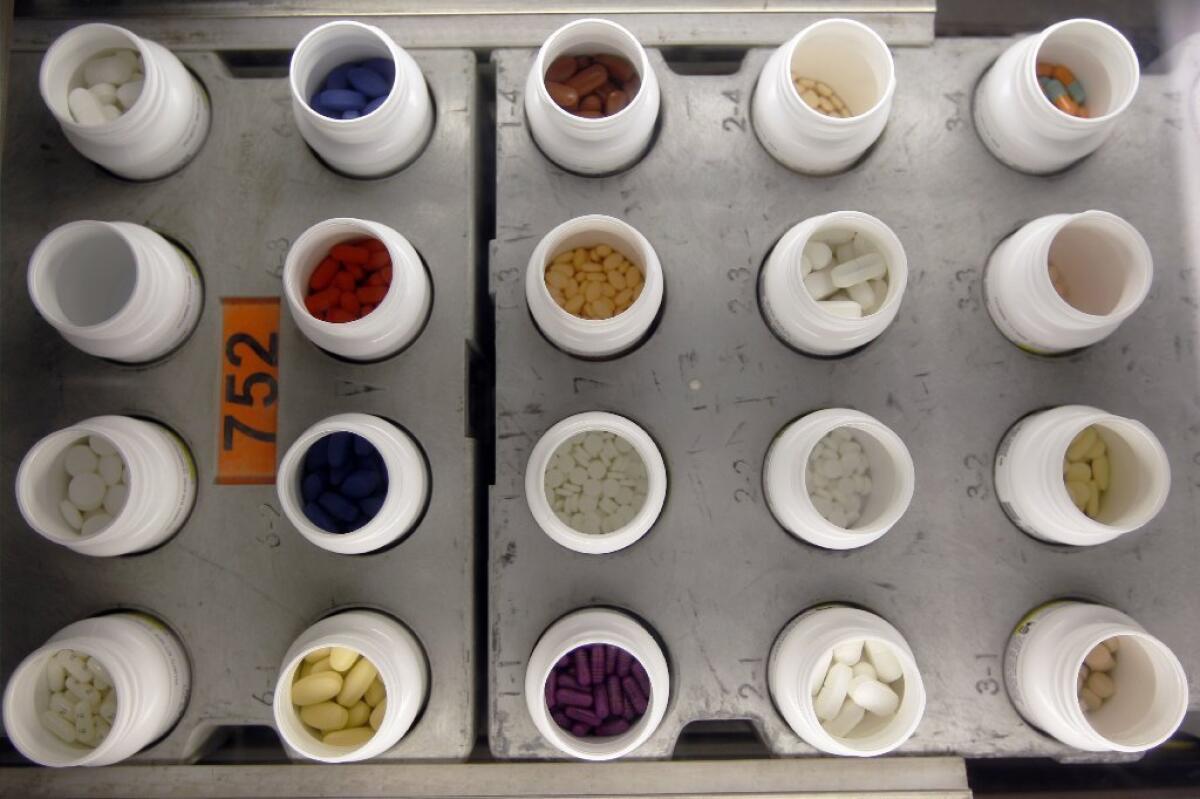Specialty drug costs soar 32% to $438 million at CalPERS amid uproar over prices

Specialty drugs are less than 1% of all prescriptions at the California Public Employees’ Retirement System, but they account for 24% of total drug spending.
One of the nation’s biggest healthcare buyers, the California Public Employees’ Retirement System, said its specialty drug costs soared 32% last year to $438 million.
Despite being less than 1% of all prescriptions, specialty drugs accounted for nearly a quarter of the pension fund’s $1.8 billion in total drug costs, according to a new report by the agency.
Hepatitis C drugs such as Sovaldi, which have sparked a growing uproar over drug prices nationwide, drove much of the increase, as did medications for rheumatoid arthritis, cancer and multiple sclerosis.
See more of our top stories on Facebook >>
The state agency spent $43.9 million on Sovaldi last year, and an additional $16.5 million on two other hepatitis C drugs, Harvoni and Olysio.
CalPERS spends about $8 billion annually on medical care for 1.4 million active and retired government employees and their family members. Earlier this year, agency officials cited rising pharmacy costs as one of the primary reasons why insurance rates were increasing so much for 2016.
HMO premiums increased 7.2% for 2016, while rates for PPO, or preferred provider organization, plans went up even more at 10.8%, on average.
Apart from specialty drugs, the top-selling medications at CalPERS were acid-reflux pill Nexium, bipolar drug Abilify and asthma inhaler Advair. Painkiller Oxycontin rounded out the Top 10 with $16.4 million, according to claims data.
CalPERS staff presented the latest data to the agency’s Pension and Health Benefits committee Tuesday.
Kathy Donneson, chief of the agency’s health plan administration division, said CalPERS is exploring different options for controlling prescription drug spending in order to minimize the impact on premiums.
“We are under pressure,” Donneson told the committee Tuesday. CalPERS wants to “keep pharmacy trend from blowing through the roof as we look at” future premiums.
Committee members noted, however, that some increases in prescription drug spending can save money in the long run by avoiding hospitalizations and other costly care later on. They asked staff to report back on any studies shedding light on that trade-off in spending.
Gilead Sciences Inc. has defended the value of its hepatitis C drugs like Sovaldi because they offer high cure rates and avoid the long-term medical expenses related to liver failure, cancer and transplants.
The agency’s healthcare trends are closely watched across the country as a harbinger of what big employers and their workers might be facing.
The high prices of specialty medications have drawn the ire of lawmakers, health insurers and patients for months.
Tuesday, officials in the health insurance industry seized on the California data to press for more transparency from drugmakers on how they set their prices.
“We have seen national reports of spikes in drug pricing, and now we see the impact right here in California,” said Charles Bacchi, chief executive of the California Assn. of Health Plans, an industry trade group. These increases are “not sustainable for public employees – or really any healthcare consumer.”
At CalPERS, rheumatoid arthritis drugs Enbrel and Humira topped the list of costliest specialty drugs for 2014. Together, CalPERS spent $91 million on the two medications, or nearly 5% of total drug spending.
Prescription drug costs increased nearly 8% overall at CalPERS for 2014.
Twitter: @chadterhune
ALSO
Hiltzik: The myth of ‘consumer-driven healthcare’ comes to life again
Consumer prices hold steady in November, but other inflation signs point toward Fed rate hike
Column: We’ve learned nothing from the subprime mortgage meltdown. Here’s proof.
More to Read
Inside the business of entertainment
The Wide Shot brings you news, analysis and insights on everything from streaming wars to production — and what it all means for the future.
You may occasionally receive promotional content from the Los Angeles Times.











